The Winemaker’s Think Tank: Vol 12- Common Winemaking Faults and Flaws
What’s the Winemaker’s Think Tank?
Every Thursday we will post about a few frequently asked questions that our winemaker has answered. If you have a winemaking question you would like to have answered, please email us at support@juicegrape.com and we will try to get into next week’s post. Cheers! 🙂
In this week’s Winemaker’s Think Tank we outline the difference between flaws, faults, and how to identify them.
- Flaws
- Flaws are a mistake made in the winemaking process that leads to a property in the wine that is not characteristic of the varietal
- Stylistic Choice vs. Flaw
- Imbalance Flaw
- Acid vs Sugar, Oak Levels, Alcohol Level
- Visual Flaws
- Haze, Sediment, Effervescence, TA Crystals, Floaters, Lack of Color Saturation
- Aroma/Bouquet Flaws
- Lack of Aroma, Non-varietal aroma, Over-oaking
- Faults
- Faults are often a microbial or chemical reaction within the wine in some part of its life that significantly alters a wine, eventually leading to the point of spoilage.
- Oxidation Faults
- Acetaldehyde – oxidation of Ethyl Alcohol smells like sherry, or old apples, browning
- Causes: headspace, low sulfites, poor corks, bacterial contamination
- Acetic Acid – Vinegar
- Causes: Acetaldehyde, Acetobacter bacteria react with ethanol, Fruit Flie
- Ethyl Acetate – Nail Polish Smell
- Oxidation of Acetaldehyde and Acetic Acid
- Causes: headspace and bacterial contamination
- Acetaldehyde – oxidation of Ethyl Alcohol smells like sherry, or old apples, browning
- Sulfur Faults
- Hydrogen Sulfide – Rotten Eggs Smell
Causes: lack of yeast nutrients, yeast stress, sulfur sprays, yeast bi-product, high temps - Sulfur Dioxide – Burnt Match Smell
Causes: over sulfating, wild yeast - Complex Sulfur Faults- Mercaptans, DMS, DES, DMDS, DEDS
Causes: Hydrogen Sulfide reacting with Ethyl Alcohol
- Hydrogen Sulfide – Rotten Eggs Smell
- Microbial Faults
- Brettanomyces – Barnyard, Horse Saddle, Antiseptic Ointment, Band-Aids, Bacon, Clove
- Causes: spoilage yeast cells that are incredibly dangerous and difficult to eliminate. Most often found in contaminated barrels, winery cleanliness, resistant to acid and SO2
- Geranium Taint – Fresh cut geranium leaves
- Causes: Reaction of potassium sorbate with Lactic Acid Bacteria in the presence of Ethyl Alcohol
- Refermentation – Fizzy wine, popped corks
- Causes: Yeast or microbial fermentation of residual sugar
- Brettanomyces – Barnyard, Horse Saddle, Antiseptic Ointment, Band-Aids, Bacon, Clove
- Other Faults
- Cork Taint – Wet basement, wet old newspaper, mildew
- Causes: strain of trichloanisole on cork (cork taint); mold that contacts chlorine and wood
- Heat Damage – Cooked fruit smell, brick red color, similar to oxidation
- Causes: leaving wine in a hot car, in the sun, etc.
- Cork Taint – Wet basement, wet old newspaper, mildew
We hope this information helps with your winemaking. If you have any follow up questions or winemaking questions in general, please email us at support@juicegrape.com.
The Winemaker’s Think Tank: Vol 11 – Spring Wine Yeast Suggestions: Cabernet Sauvignon

What’s the Winemaker’s Think Tank?
Every Thursday we will post about a few frequently asked questions that our winemaker has answered. If you have a winemaking question you would like to have answered, please email us at support@juicegrape.com and we will try to get into next week’s post. Cheers! 🙂
Varietal Country of Origin Yeast Strain Yeast Attributes:
Cabernet Sauvignon – Chile/South Africa
- Chile- CSM Diminishes vegetal character: 25Brix/14%ABV /High
- South Africa- CSM/D254 CSM Diminishes vegetal character 25Brix/14%ABV/High while D254 promotes fruit character, berry, plum, mild spice- 29Brix/16%ABV/ Medium
Malbec – Chile/Argentina
- D254 Promotes fruit character, berry, plum, mild spice- 29Brix/16%ABV/ Medium
Carmenere – Chile
- D254 Promotes fruit character 29/16%ABV medium
- BDX Soft tannins, secures color, low heat 29/16% ABV medium
Pinotage – South Africa
- BM 4×4 Very reliable, increased color, palate length 27/15%ABV high
- D80 Increases mouthfeel and tannin integration 29/16%ABV high
Chardonnay – Chile
- QA23 Promotes apple and pear notes 29/16%ABV low
- Vin 13 Promotes pineapple and tropical notes in SS 30/16.5%ABV low
Sauvignon Blanc – Chile
- 71B Promotes grapefruit & tropical notes 25/14%ABV low
- R2 Promotes fruit and floral notes 29/16%ABV high
- QA23 Promotes passion fruit 29/16%ABV low
We hope this information helps with your winemaking. If you have any follow up questions or winemaking questions in general, please email us at support@juicegrape.com.
The Winemaker’s Think Tank: Vol 10 – Making Wine from Pinotage Grapes

What’s the Winemaker’s Think Tank?
Every Thursday we will post about a few frequently asked questions that our winemaker has answered. If you have a winemaking question you would like to have answered, please email us at support@juicegrape.com and we will try to get into next week’s post. Cheers! 🙂
We all know that feeling. You made it through the holidays, your wines are resting peacefully in your cellar, but there’s something missing. You’re getting that “itch.” You go down to your cellar and see that a few of your barrels are empty, and that French oak barrel shouldn’t be empty too long . . . so you start Googling and then you find that there is a spring wine season! Your prayers are answered! You can scratch that winemaking itch and get moving on your next vintage. Believe me, your French oak barrel will thank you.
Not all winemakers know this but Musto Wine Grape brings in wine grapes and juices from South America and South Africa in the springtime. Specifically Pinotage and Cabernet Sauvignon from South Africa, Malbec from Argentina, and Cabernet Franc, Cabernet Sauvignon, Carmenere, Merlot, Malbec, Petite Verdot, Pinot Grigio, Pinot Noir, Sauvignon Blanc, Syrah, and Viognier from Chile.
Making wine from these grapes and juices is very different than the California grapes and juices. The grapes have a much longer ride and the regions where the grapes are grown give off very different characteristics. Argentinean and Chilean grapes tend to have a lot of fruit-forward notes, dark berry flavors, with cigar and earthy undertones; as opposed to the South African grapes that have a brighter fruit profile such as cranberry and raspberry.
In the spring of 2016 we decided to make a Pinotage. Neither of us had ever made one before and we were excited to try out a new wine grape variety and region. Pinotage is a red wine grape that is South Africa’s signature variety. It was bred there in 1925 as a cross between Pinot Noir and Cinsault (also known as Hermitage) – thus the name Pinotage. It is the second most planted grape in South Africa.
As a winemaker it was very exciting to get a chance to make wine from South Africa. It was also exciting to make a wine we have never made before. The grapes came in 20 lb. (9 kg) cases and were simply immaculate. The berries were in very good condition with no mold or decay. The one thing we did notice about the grapes is the skins were different in texture. They chewed for a long time and can almost be described as leathery. We have never seen that on a California or South American grape before.
The initial numbers on the grapes were workable. The Brix came in at 25, which would result in an alcohol of 13.75%. There was no adjustment needed on the sugar level. The pH and titratable acidity (TA) came in at 3.91 and 6.2gm/L respectfully. Tartaric acid was added to get the pH to a desired level. One thing we have learned is every grape is different – they cannot be handled by mathematical formulas only. Always bench test your adjustments; the results are not always linear. Our goal is to get the pH AND the TA to the ideal levels. This is not always possible, but an experienced winemaker will have to make the best decisions.
After adding tartaric acid, we ended up with a pH of 3.5, which is an ideal number. The TA only rose to 7.5 gm/L. As we stated above these grapes did not show the linear relationship between the pH and TA – meaning it is not always true what the pH goes down, the TA goes up.
So these were good starting numbers to release the grapes for fermentation. Something Frank and I swear by is always making your adjustments before fermentation. Once fermentation starts it is a moving target. And once the wine has completed fermentation, you really should not be making major pH/TA adjustments. We went with D254 yeast, simply because it always does a good job and we have never made these grapes before. Next year we think we might try the BDX yeast.
We processed these grapes with the same protocol as a California vinifera. We cold soaked the grapes 3–4 days. Cold soaking not only gives you time to work on the wine before fermentation, but allows the wine to “bleed out” and stabilize. The skins break down and you get the tannins and color to stay with the must. While the grapes were in a cold soak we made the Brix, pH, and TA adjustments. We also added normal additives such as tannins, Opti-red, oak powder, etc.
The fermentation went well. A normal 3–4 punch downs a day is a good protocol. We checked the temperature every morning and evening. It ran from 70–80 °F (21–27 °C) the entire fermentation, a good temperature for reds.
The pressing went well. The skins were still like little pieces of leather – we will never forget that about Pinotage. The fresh pressed juice had a cotton candy nose to it, which we found unusual but pleasing. It has faded off to a bright red berry nose as time has gone on.
Once the wine was racked 2–3 times, it was moved to a Hungarian barrel for 8 months. It is now back in the tank for final adjustments before bottling. The final numbers are all good. The pH is 3.52, the TA is 0.62 and the alcohol level is 14%.
Tasting Notes:
The nose has red berries such as raspberry and cranberry. It is a clean nose with a “fruity” character.
The palate had red licorice and tobacco, and reminds me of a Pinot Noir. The tannin level is medium, which we find perfect for this wine. Big tannins would have overtaken this particular lot of Pinotage. It is an easy drinking wine. It has a sweet fruity presence, yet there is no residual sugar. This will make a good red for the summer for those red drinkers who refuse to go to whites at that time.
So there it is. We made our first South African wine from grapes. It was exciting and a learning experience for both of us. Each season we will try to process them differently to create other sides of this wonderful wine — Pinotage!
You have many winemaking options during the spring winemaking season. Don’t let a unique winemaking opportunity pass you by! If you have any questions about the spring wine season feel free to email me at cmusto@juicegrape.com.
Article by Christina Musto & Frank Renaldi for Winemaker Magazine. You can see the entire article by clicking HERE.
We hope this information helps with your winemaking. If you have any follow up questions or winemaking questions in general, please email us at support@juicegrape.com.
News from the field as of 3/3/2017…..
News from the field…
South African Pinotage: Harvested and in transit. The Pinotage should hit the port around March 28th.
South African Cabernet: Harvest is about 10 days out. It will most likely arrive sometime in mid-April.
Argentina Malbec: Also about 10 days out as of right now. We think the grapes should arrive sometime in mid to late April.
Chilean grapes: White grapes will start to harvest next week. The white grapes should arrive around last week in April and reds grapes should arrive around the first or second week in May.
Southern Hemisphere Juices: Arriving mid to late April.
The prices for the Spring products are here and we are taking Pre-Orders via email and over the phone. Please feel free to contact us at sales@juicegrape.com or 877.812.1137 to place your pre-order.
We are looking forward to working with you this Spring Harvest! Keep an eye on our Facebook Page and Harvest Tracker for more harvest information and upcoming wine classes.
The Winemaker’s Think Tank: Vol 9 – How long will my wine last?
What’s the Winemaker’s Think Tank?
Every Thursday we will post about a few frequently asked questions that our winemaker has answered. If you have a winemaking question you would like to have answered, please email us at support@juicegrape.com and we will try to get into next week’s post. Cheers! 🙂
How long will my wine last?
All wine ages differently. Certain varietals benefit from aging, others are meant to be consumed quickly. Generally, the more tannic the wine, more it will benefit from aging. Other factors influence a wine’s potential to age as well. If the winemaker chooses not to add sulfites to the wine (not recommended), the wine will not age as well and should be consumed within a year. If the proper level of sulfites are added, the wine stored at an appropriate temperature (55-62 degrees Farenheit), and not exposed to light, it should be able to age for many years. Some varietals that benefit from aging are Chardonnay, Cabernet Sauvignon, and Malbec. Some varietals that do not necessarily benefit from aging are Gewurztraminer, Sauvignon Blanc, and Cayuga.
We hope this information helps with your winemaking. If you have any follow up questions or winemaking questions in general, please email us at support@juicegrape.com.
The Winemaker’s Think Tank: Vol 8 – Grape Yield
What’s the Winemaker’s Think Tank?
Every Thursday we will post about a few frequently asked questions that our winemaker has answered. If you have a winemaking question you would like to have answered, please email us at support@juicegrape.com and we will try to get into next week’s post. Cheers! 🙂
When should I bottle?
The answer to this question can have many directions. The simple answer is: when the wine is ready. On average, white wines may be bottled 6-12 months after fermentation. Red wines benefit more from bulk aging, that is, aging all of that varietal together in a large vessel such as a tank or barrel or carboy, rather than in individual bottles. A red wine should bulk age for at least a year before bottling. Premium red wines age for at least 3 years in large vessels before bottling.
We hope this information helps with your winemaking. If you have any follow up questions or winemaking questions in general, please email us at support@juicegrape.com.
2017 Southern Hemisphere Harvest Update E-Book
Extra, extra! Read all about it! The Spring Harvest will be here soon! Catch up on what Musto Wine Grape Company has in store for your Spring vintage by clicking the link below.
The Winemaker’s Think Tank: Vol 7 – Grape Yield
What’s the Winemaker’s Think Tank?
Every Thursday we will post about a few frequently asked questions that our winemaker has answered. If you have a winemaking question you would like to have answered, please email us at support@juicegrape.com and we will try to get into next week’s post. Cheers! 🙂
When it comes to making wine, often there is nothing more exhilarating than sampling the fresh grapes as they come in and selecting the varietals that will best suit your individual winemaking needs. Once you have selected the varietals that you would like to make that season, the most often the next question is “How many grapes will I need to make my desired amount of wine?”. The answer changes slightly depending on the origin of the grapes. South American producers fill their crates with 18lbs of grapes. This typically requires the winemaker to purchase 4 crates (18lbs each) to yield 5 gallons of wine. The same formula roughly applies to South African grapes as well, with their grapes being packed 20lbs per crate. Obviously this will yield the winemaker a bit more juice, but the overall formula is applicable.
Fall harvest from the northern hemisphere gives us slightly different guidelines to follow for estimating yield. North American producers have larger crates, packed 36lbs/crate. On average, each crate yields 2.5 gallons of juice, the winemaker needing two crates per five gallons of desired wine. Seasonal growing conditions apply to the yield as well, rainfall having the most profound effect upon juice yield. Also, premium growing areas where the grapevines grow under stressed conditions, resulting in premium fruit will yield significantly less juice than grapes grown in irrigated fields. We suggest purchasing one additional crate per desired 5 gallons of finished product. The two crates per five gallon rule is a safe assumption when estimating juice yield, as it is more of a conservative estimate of juice yield. We often hear reports of a higher yield rate for certain west coast varietals. Berry size will affect the yield of juice as well. Pinot Noir and Grenache berries are significantly larger than Cabernet Sauvignon and Petit Syrah berries, often yielding up to 10% more juice. While a certain level of experience and research can aid in the estimated juice yield from your grapes, the basic rule of 4 crates per 5 gallons for South American/African produce and 2 crates per 5 gallons for North American produce is an easy means of determining how much produce you will need.
We hope this information helps with your winemaking. If you have any follow up questions or winemaking questions in general, please email us at support@juicegrape.com.
Spring has Sprung – Musto’s Southern Hemisphere Wine Grape & Juice Harvest Update
Hello Winemakers and Welcome to Your Spring Winemaking Update…..
As the snow melts on the East Coast the Southern Hemisphere is getting into harvest mode. The Spring grapes and juices will be here before you know it! Below we have a mini harvest update for each region outlining all the fresh products offered by Musto Wine Grape Co. this Spring. We’ve also included some yeast suggestions for the more popular varieties.
The prices for the Spring products are here and we are Taking Pre-Orders via email and over the phone. Please feel free to contact us at sales@juicegrape.com or 877.812.1137 to place your pre-order.
We are looking forward to working with you this Spring Harvest! Keep an eye on our Facebook Page and Harvest Tracker for upcoming FREE Wine Classes and other Spring Harvest Updates.
South Africa
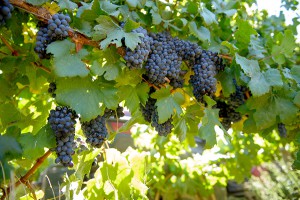 Arriving: End of March
Arriving: End of March
Grape Varieties: Pinotage, Cabernet Sauvignon
Juice Varieties: Shiraz, Merlot, Pinotage, Cabernet Sauvignon, Semillon, Chardonnay, Pinot Grigio, Chenin Blanc, Sauvignon Blanc
Vineyard Information: Pinotage will be arriving from the Breede River Valley and Cabernet will be arriving from Stellenbosch. Read more about the Pinotage here, and click here for more information about the Cabernet
Yeast Suggestions:
- Pinotage: BM4x4: A very reliable yeast. It helps increase color and palate length or D80: Increases mouthfeel and tannin integration
- Cabernet Sauvignon: D254: Brings out bright fruit flavors and complexity such as berry, plum, and mild spice.
Argentina
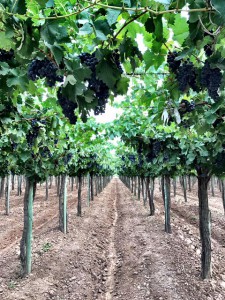 Arriving: End of April
Arriving: End of April
Grape Varieties: Malbec
Vineyard Information: The first Cantinian vineyard was planted in 1923 in Mendoza, Argentina. As of 2012, the wine grapes grown in the Cantinian vineyards were certified organic by Argencert (in conjunction with the USDA Organic Certification) and accredited by Global Program IFOAM. The vineyards are situation on elevated terrain with views of the Andes Mountains. Read more about the Argentina Malbec here
Yeast Suggestions:
- Malbec: D254: Brings out bright fruit flavors and complexity such as berry, plum, and mild spice.
Chile
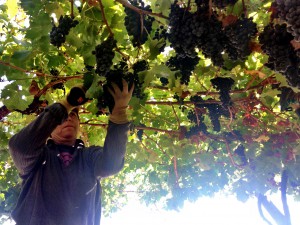 Arriving: End of April, beginning of May
Arriving: End of April, beginning of May
Grapes Varieties: Carmenere, Cabernet Sauvignon, Cabernet Franc, Malbec, Merlot, Petite Verdot, Pinot Noir, Syrah, Chardonnay, Pinot Grigio, Sauvignon Blanc, and Viognier
Juice Varieties: Carmenere, Cabernet Sauvignon, Cabernet Franc, Cabernet/Merlot Blend, Malbec, Merlot, Petite Verdot, Pinot Noir, Syrah, Chardonnay, Pinot Grigio, Sauvignon Blanc, and Viognier
Fresco Juice Varieties: Cabernet Sauvignon, Carmenere, Merlot, Malbec, Chardonnay, Sauvignon Blanc, Viognier, Chardonnay/Semillon Blend
Vineyard Information: The growing season for the Curico and Colchagua Valley’s was a hot and dry one. Expect wines with great character, intense flavors, complexity, and distinction. We should be receiving grapes around the same time as last year, maybe a little earlier for the whites. Read more here for more information on the Chilean Harvest.
Yeast Suggestions:
- Cabernet: CSM – New Yeast Coming to Musto Wine Grape in the Spring!, Keep an eye for a blog post about in on Thursday’s Winemaker Think Tank!
- Malbec: D254: Brings out bright fruit flavors and complexity such as berry, plum, and mild spice.
- Carmenere: D254: Brings out bright fruit flavors and complexity such as berry, plum, and mild spice or BDX: Promotes soft tannins, secures color, and ferments at low heat.
- Chardonnay: QA23: Promotes apple and pear notes or VIN13: Heightens pineapple and tropical notes
- Sauvignon Blanc: R2: Promotes fruity and floral notes or 71B: Brings out grapefruit notes and other tropical fruits or QA23: Promotes apple and pear notes or VIN13: Heightens pineapple and tropical notes
So pour yourself a glass of wine and give us a call or shoot us an email to secure your Pre-Order Today!
The Winemaker’s Think Tank: Vol 6 – Do I Add Yeast to My Wine?
What’s the Winemaker’s Think Tank?
Every Thursday we will post about a few frequently asked questions that our winemaker has answered. If you have a winemaking question you would like to have answered, please email us at support@juicegrape.com and we will try to get into next week’s post. Cheers! 🙂
Do I Add Yeast to My Wine?
Some winemakers prefer what is called a “natural method” of fermentation, by allowing the yeast that live on the grape skins to ferment the must into wine. While these yeast can start the process of fermentation, they generally have too low of a population and alcohol tolerance to successfully finish the fermentation process. The most successful fermentations are conducted with lab cultured yeast cells. This is not to say that this method isn’t natural as well. Scientists travel to famous wine growing regions to obtain samples of the natural yeast flora that exist in those environments. They take these samples back to the lab and culture them, breeding select and healthy populations that can be packed and sold to winemakers all over the world. These selected yeast strains have a higher alcohol tolerance and have had the benefit of many trials and research conducted on their behalf to see exactly how they affect a wine. By using these strains you will not only have a more successful fermentation, but also more predictable results rather than the unpredictable results of the wild flora “natural yeast” that live on the skins. Through their research, scientists have found that certain yeasts promote certain attributes of the wine such as color security, fruit characters, spice flavors, and acid reduction. A vintner may select one of these commercially bred strains to get the desired effect they would like in their end product.
We hope this information helps with your winemaking. If you have any follow up questions or winemaking questions in general, please email us at support@juicegrape.com.








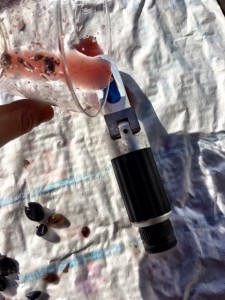
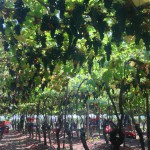
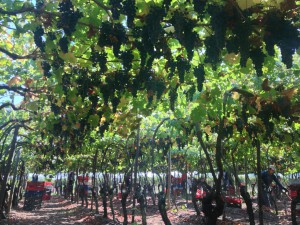
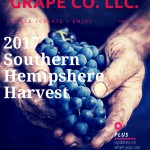
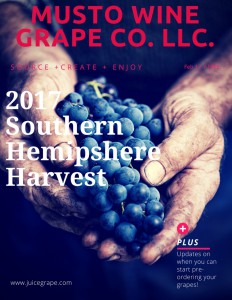
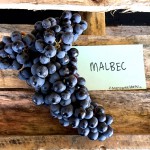
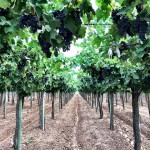
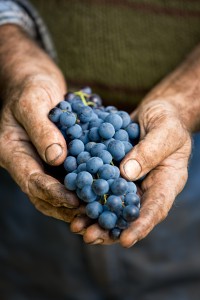
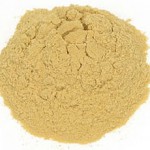
Recent Comments